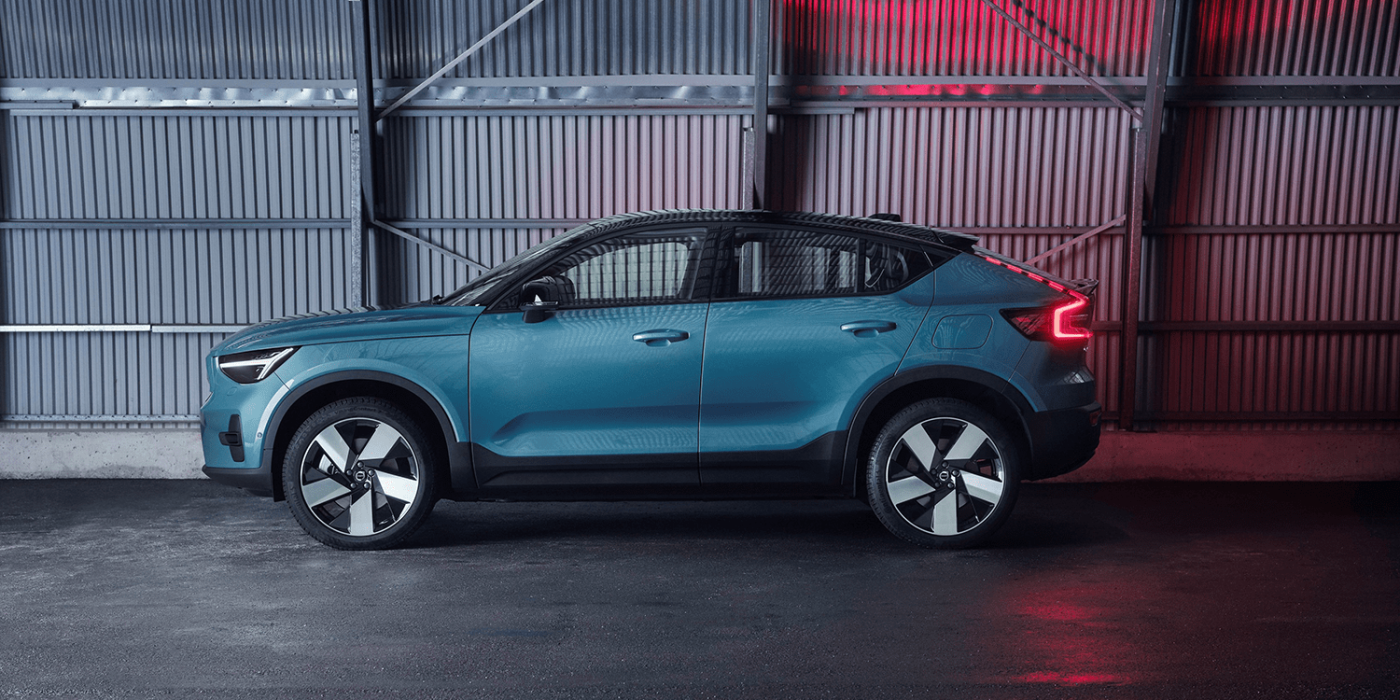Volvo reveals the CO2 footprint of the C40 Recharge
Volvo Cars published the life cycle assessment of the new Volvo C40 Recharge it makes in Belgium. One of the key findings is that even when the C40 Recharge is charged with electricity from the global energy mix, its carbon footprint, including production and recycling, is lower than that of a combustion engine.
As the C40 Recharge is the first Volvo model to be offered exclusively with electric drive, a petrol-engined Volvo XC40 was used as a comparative combustion engine model for the analysis. Both models are based on the CMA platform from Volvo and its parent company Geely.
According to the life cycle assessment, the C40 Recharge has a CO2 footprint of around 27 tonnes over its entire life cycle if the charging current comes exclusively from clean energy sources. If, on the other hand, the vehicle owner uses the average global energy mix, in which about 60 per cent of electricity is generated from fossil fuels, emissions rise to as much as 50 tonnes of CO2 – with the EU-28 electricity mix, the figure is still 42 tonnes of CO2.
Incidentally, the XC40 Recharge, which is closely related to the C40, also comes to 27 tonnes of CO2 emissions if only green electricity is used for charging during the “use phase”. Since the C40 as an SUV coupé is somewhat more aerodynamic and thus more economical, there is a difference in the calculation with EU-28 electricity mix: here the XC40 Recharge comes to 44 instead of 42 tonnes.
Nevertheless, both models are clearly below conventionally powered vehicles: the Volvo XC40 with combustion engine, for example, has 59 tonnes of CO2 over its life cycle. The so-called “end-of-life” emissions and the share of production in the Volvo factories are the same regardless of the type of drive.
There are differences in three items: the emissions in the use phase (by far the largest item in the case of the combustion engine), the production and supply chain of raw materials and, in the case of the electric cars, battery production. Volvo puts the latter at around 4-5 tonnes of CO2 per vehicle.
If you add up the individual items that occur until the car is handed over to the customer, the CO2 emissions of the C40 Recharge (and the all-electric XC40) are around 70 per cent higher than those of the combustion model. The big difference is in the use phase – calculated at 200,000 kilometres.
The charging current in the use phase is very important, but there is still further potential, as the analysis shows: The fact that the CO2 emissions in the “Materials production and refining” item are higher in the C40 Recharge than in the combustion engine XC40 is due to the quantities used. “More aluminium is used in an electric car than in the combustion models,” explains Jonas Otterheim, Head of Climate Action at Volvo. “The processing of aluminium is still very energy-intensive.”
To fully exploit the potential of electric cars, Volvo Cars is therefore calling for more investment in clean energy. “We need green power throughout the supply chain and production, not just in the use phase when charging,” says Otterheim. “We are not waiting for regulatory requirements here, but proactively moving forward.” For example, Volvo has set itself the goal of emitting 40 per cent less CO2 per car by 2025 (compared to 2018). Of this, 25 per cent is to be saved in production – among other things through increased proportions of recycled materials, including aluminium.
In April, Volvo Cars had announced that it would develop recycling cycles in a global initiative to reduce CO2 emissions and spending. This included recycling high-voltage batteries from BEVs and PHEVs – but also recycling and, above all, avoiding production waste.
“We made a conscious strategic decision to become a fully electric car maker and an industry leader, but we can’t make the transition to climate neutrality alone,” says Håkan Samuelsson, President and CEO of Volvo Cars, referring to the climate summit currently underway in Glasgow. “We need governments and energy firms around the globe to step up their investments in clean energy capacity and related charging infrastructure, so fully electric cars can truly fulfil their promise of cleaner mobility.”
volvocars.com, volvocars.com (PDF)





0 Comments